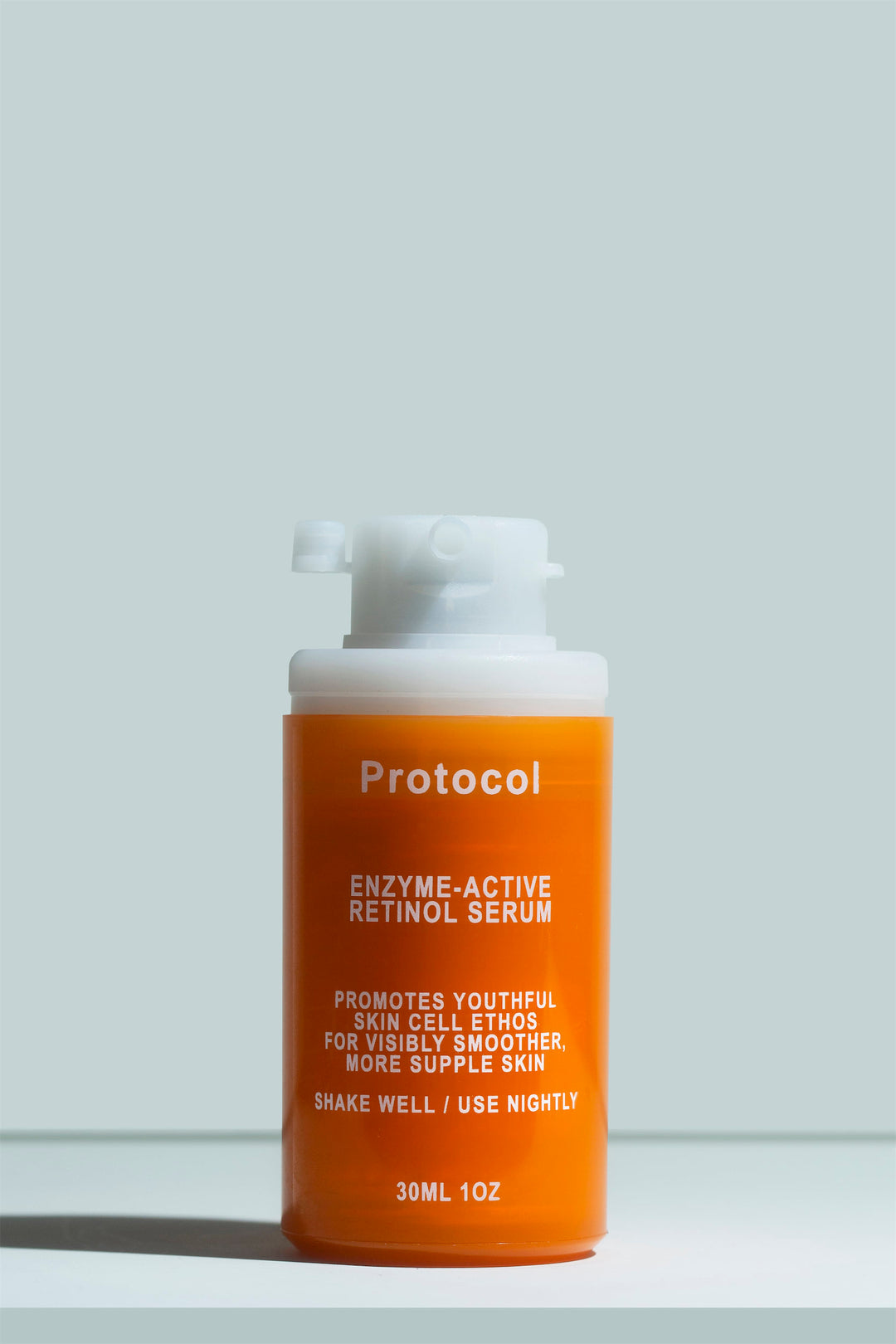How to Use Niacinamide and Vitamin C Together

Niacinamide and vitamin C are two of the hottest ingredients in skincare. We’ve already put them head to head in our vitamin C vs niacinamide comparison post, and our conclusion there was pretty simple - it’s best to use niacinamide and vitamin C together.
But how do you actually do that? Maybe you’ve heard that you can’t combine vitamin C and niacinamide, or perhaps you’re not sure which to use when. Either way, we’ll explain how you can get the most out of pairing these two ingredients.
Can I use niacinamide and vitamin C together?
Yes, you can use niacinamide and vitamin C together! The easiest way to use both is to use a serum with vitamin C in the daytime and a moisturizer with vitamin C in the morning and/or night.
Then again, there are a lot of ways to combine niacinamide and vitamin C, based on what the rest of your routine looks like and your specific needs. Recent studies show that using them together poses no problems, and can even contribute to better results.
There is a misconception that you can’t use them together because of how they’ll react to one another, which we’ll debunk in the next section!
But I’ve heard I shouldn’t use them one after the other - what’s that about?
There is a widespread myth that using niacinamide and vitamin C together can cause irritation, but we’re happy to report it’s not really true.
If you mix vitamin C and niacinamide at a high temperature, the two ingredients will react together, causing the formation of nicotinic acid - a more aggressive version of vitamin B3. According to researchers, nicotinic likely has the same (if not superior) benefits to niacinamide, but it can also cause facial flushing.
However, there haven’t been any documented cases of this reaction happening with separate products, at least not in the last few decades. When a nicotinic acid does occur, it’s usually short-lived, and it doesn’t impact the ingredient’s effect on the skin.
What does niacinamide do?
Niacinamide is the skincare world’s jack-of-all-trades. It’s a form of vitamin B3 that our body metabolizes readily, and that acts as a precursor for all kinds of important enzymatic processes. As a topical ingredient, it can improve a lot of different skin functions at once, to address just about any skin concern.
Studies show that it can help with hyperpigmentation, acne, sensitivity, large pores, and signs of premature aging.
Uniquely, niacinamide has a very balancing effect on the skin. It encourages healthier lipid and ceramide production in the skin, which fortifies the skin barrier to prevent dryness and dehydration. At the same time, it prevents the excessive production of sebum, making it a fantastic ingredient for those with oily or acne-prone skin.
The majority of studies look at twice-daily use of smaller amounts of niacinamide, between 2% and 5%, in either cream, sunscreen, or serum formulas.
What does vitamin C do?
Vitamin C is the skincare world’s most powerful antioxidant. Normally, it reaches our skin through our diet, where it plays a very important role in healthy skin functions. However, as we get older, our skin’s vitamin C levels deplete along with other skin constituents.
Thankfully, research shows that using vitamin C in skincare is an effective way of raising your skin’s vitamin C levels! We like to think of topical vitamin C as the skin’s friendly neighborhood superhero. Once you’ve used vitamin C consistently, it permeates through your skin and defeats any external aggressors that come its way.
This makes it a powerful protector against fine lines, wrinkles, and hyperpigmentation, which are caused in large part because of sun and pollution exposure.
Vitamin C also actively reverses some of the signs of premature aging. It’s a skin brightener that works by disrupting the processes that lead to dark spots, and it also boosts collagen in the skin, to actively create smoother skin. This combination of effects results in skin that looks much brighter and glowier. Finally, it also has some soothing effects.
Note that many skincare products advertised as containing vitamin C actually contain derivatives that have minimal skin impact. It’s important to look for vitamin C serums with a water-based formula that contains 8%-10% ascorbic acid, and that are packaged in a way that protects the formula from oxygen and UV exposure.
Benefits of combining vitamin C and niacinamide
By using both niacinamide and vitamin C, you can expect faster and more noticeable changes to your skin, especially in the following ways:
- Skin brightness: Independently, both vitamin C and niacinamide help brighten the skin and fade discoloration. By combining the two, you can address discoloration through several mechanisms of action, potentially leading to faster results and brighter skin.
- Better photoaging prevention: Having different antioxidants in your routine leads to more comprehensive protection from premature aging.
- Reduction in fine lines and wrinkles: Independently, both niacinamide and vitamin C have been found to fade the look of fine lines and wrinkles.
- Stronger skin barrier: Vitamin C and niacinamide both support the skin’s own production of barrier lipids, resulting in stronger skin that’s more resistant to dryness, irritation, and damage.
- Smaller pores and reduced oil production: Niacinamide has a mediating and clarifying effect on those with oily skin, helping to minimize pores and control excess oil production.
How to use vitamin C and niacinamide together in a routine
From the first steps to general product selection advice, these are our key tips for using vitamin C and niacinamide together in your routine.
Careful introduction
In general, it’s important to only introduce one new skincare product at a time, especially when you’re looking at active ingredients like vitamin C and niacinamide. Pick a product with one of the two ingredients, and use it for a couple of weeks before introducing another new item.
If you already have a routine in place, review the ingredients in your go-to products. A lot of mainstream moisturizers and sunscreens already contain niacinamide, so you might not need to purchase a new niacinamide product, and you can dive straight into vitamin C instead.
If you’re a total beginner to skincare, have a look at our basic skincare routine guide for an idea of what your routine should look like.
Vitamin C is always first
Vitamin C is a superhero, but it’s also a bit of a diva, especially compared to easy-going niacinamide. It has to be in a water-based serum, at the right pH, and at a high enough percentage.
Beyond that, if your vitamin C can actually absorb into your skin, make sure it’s the first leave-on product in your routine. It’s best used in the morning since it can also help fortify your sunscreen.
Then, wait a few minutes before following up your vitamin C with any additional products, including ones that contain niacinamide.
Benefit from the versatility of niacinamide
Because niacinamide is so convenient, you can pop it into your skincare routine wherever it makes the most sense. If your niacinamide comes from a moisturizer, you can use it in the morning or night as a final step in your skincare routine, whereas if it’s in a serum, you’ll want to use it before your moisturizer (but after using any vitamin C or other low-pH products).
We like to use niacinamide in moisturizers, like our Hydration Cream. Since it’s a barrier-repairing ingredient, we also like seeing it as a supportive add-on in serums without low-pH ingredients, such as retinoids or skin-soothing agents.
Day and night split
In most cases, you should be able to layer your vitamin C and niacinamide products within the same routine without any issues. That said, it might still make more sense for you to split up your products so you use vitamin C in the daytime and niacinamide at night, especially if you’ve opted for a serum with niacinamide. This can make for a more streamlined and easy-to-follow routine.
Should I alternate or cycle vitamin C and niacinamide?
No, there’s no need to alternate or cycle with vitamin C and niacinamide. In research, the benefits of niacinamide and vitamin C are usually noted when the products are used on a daily basis.
If you experience any signs of irritation, from either niacinamide, vitamin C, or the combination, chances are that one or both products are too harsh for your skin. In that case, it’d be best to take a break from both products and follow a careful process of re-introduction to see if one of them is too irritating for your skin.
Very high percentages of niacinamide or vitamin C formulas with a very low pH can lead to irritation. Keep this in mind when shopping for products with these ingredients.
Should I use products that contain both niacinamide and vitamin C?
At Protocol, we don’t formulate vitamin C and niacinamide together, and for a fairly good reason. Niacinamide is best formulated at a pH between 4 and 6, while vitamin C in its bioactive form as ascorbic acid is best formulated at a pH between 3 and 3.5. Because there’s no overlap, it’s impossible to formulate products with both ingredients without either making one more irritating or deactivating the other.
While some brands do have serums with both vitamin C and niacinamide, those serums might as well only contain the niacinamide. Usually, the vitamin C in those formulas is a derivative, like magnesium ascorbyl phosphate, which doesn’t have nearly the same skin benefits as pure ascorbic acid. Another possibility is that the product only includes a very small amount of ascorbic acid at a high pH where it’s totally inactive.
How long to wait between vitamin C and niacinamide?
In general, we advocate that you allow your skincare enough time to sink in completely before applying the next step. In the case of vitamin C and niacinamide, always apply your vitamin C first. Wait at least 5 minutes to allow the vitamin C to absorb, before applying any additional products. That said, if you’re in a rush, it’s okay to wait a little less time as long as your skin is no longer feeling tacky.
Your seamless skin renewing routine with Protocol
If you’re looking for effective, gentle, high-quality niacinamide and vitamin C products you can use together, the Protocol Skincare range has you covered. Our products are designed to work together in a simple but optimized routine that’ll get you the smoothest, most radiant skin of your life.
Our Vitamin C Superserum is made with ascorbic acid, the science-backed form of vitamin C proven to fade wrinkles and discoloration. At night, you can enjoy a little niacinamide boost in our Enzyme-Active Retinol Serum, which helps boost the formula’s effects while reducing the risk of irritation.
Both of our potent, bioactive serums pair seamlessly with our Niacinamide & Hyaluronic Acid Hydration Cream. The formula layers over top to deliver hydration while improving the skin’s lipid barrier. The formulas don’t interact, so you can rest easy knowing you’re combining your vitamin C and niacinamide in the correct way!




